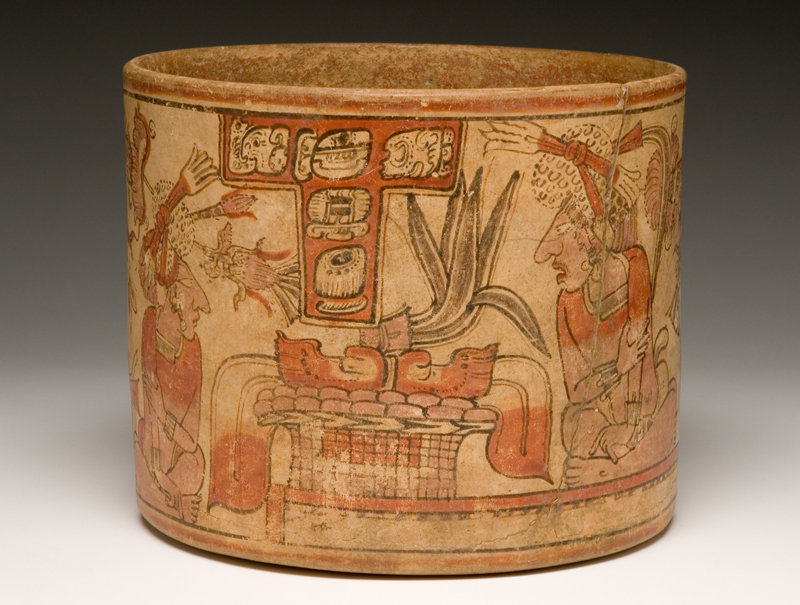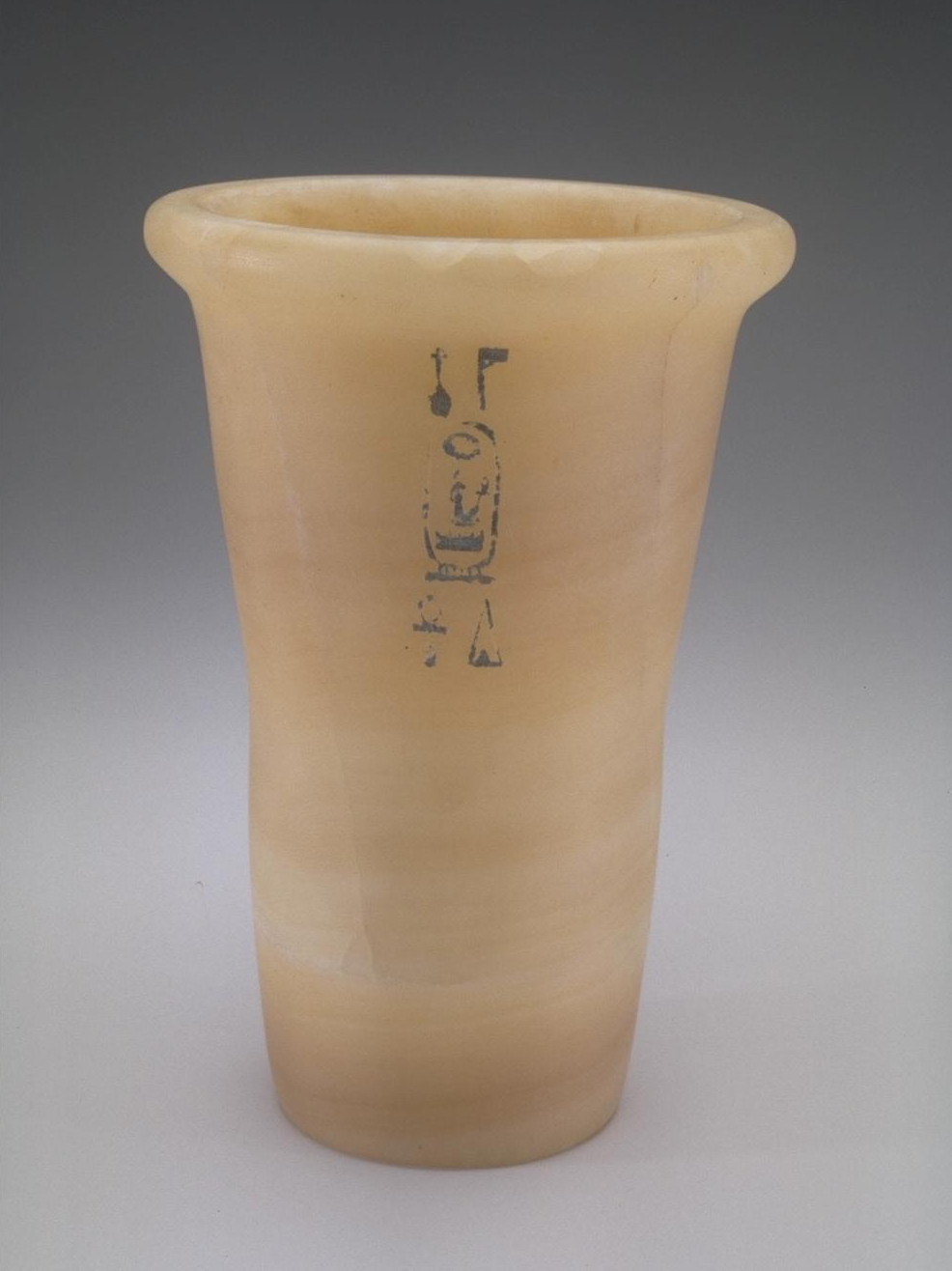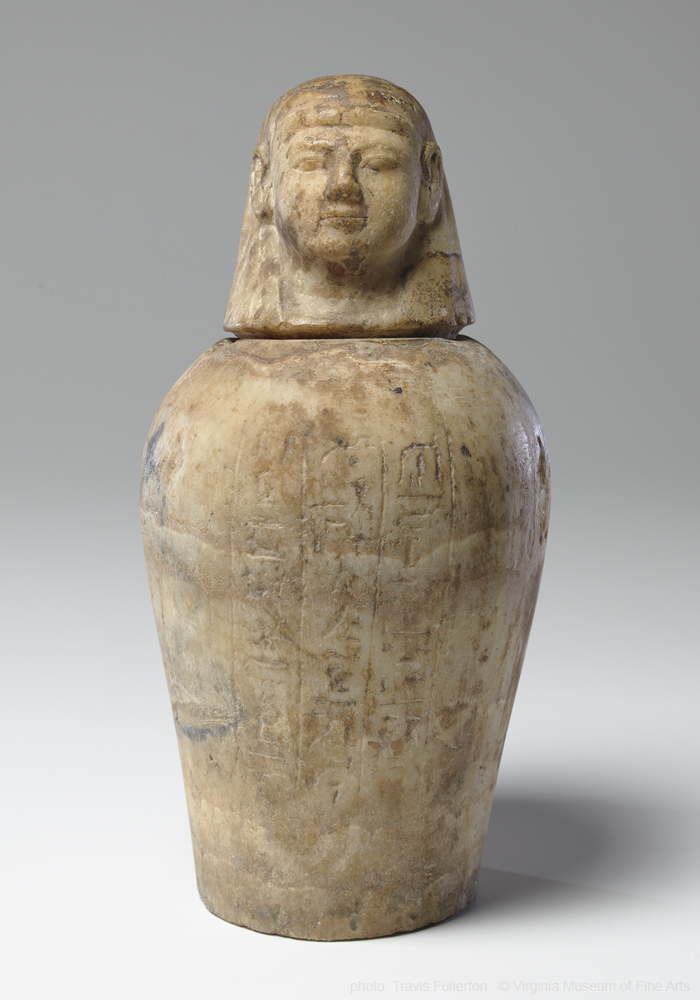
Maya (Mexico or Guatemala)
Funerary Vessel, 600-800 AD Terracotta with polychrome pigments Adolph D. and Wilkins C. Williams Fund, 82.131
The Maya people inhabited southern Mexico, Guatemala, and northern Belize, and parts of Honduras and El Salvador. Between 250 BC and 900 AD, they established a com-plex system of writing and build majestic temple pyramids and palaces in urban centers, which still can be seen in the ancient ruins of Tikal and Palenque. On ceramics, glyphs may describe the function and contents of the pot, and sometimes identify the owner or the scribe who painted it, although this vase does not name the exact artist. The scene unfolding around this vessel depicts a ritual in a palace setting. The glyphs name the main characters who sit on either side of a large basket: Lord Hok’in bat (seated on the throne) and Kan Xib Ahaw (seated opposite him). A third figure sits behind them, and a forth removes an embroidered, fringed textile from the large block.
Egyptian, Dynasty 19
Vase, 1294-1279 BC
Alabaster
Arthur and Margaret Glasgow Fund, 69.24
This vase bears the name of the Seti I in a cartouche, an oval frame surrounding the royal name. Seti I was the son of Ramses I, the founder of Dynasty 19, and undertook a number of military campaigns in the Levant as well as a number of building projects, including his mortuary temple at Abydos.
The vase is made of alabaster, a popular and common stone in ancient Egypt. The vessels’ walls are extremely thin, indicating the great skill of the stone carver.
Egyptian, Late Period
Canopic Jar, ca. 712-332 BC
Alabaster
Gift of Randall Worthington, 2008.154 a-b
As part of the mummification process, the internal organs of the deceased were removed, preserved, and for much of Egyptian history, placed in vessels, which are today called canopic jars. Beginning in the New Kingdom, the lids of the vessels were designed as the heads of animals, protectors of the organs inside. Each animal was associated with one of the four sons of Horus. Imsety, who was represented by a human head, was usually the guardian of the liver.

